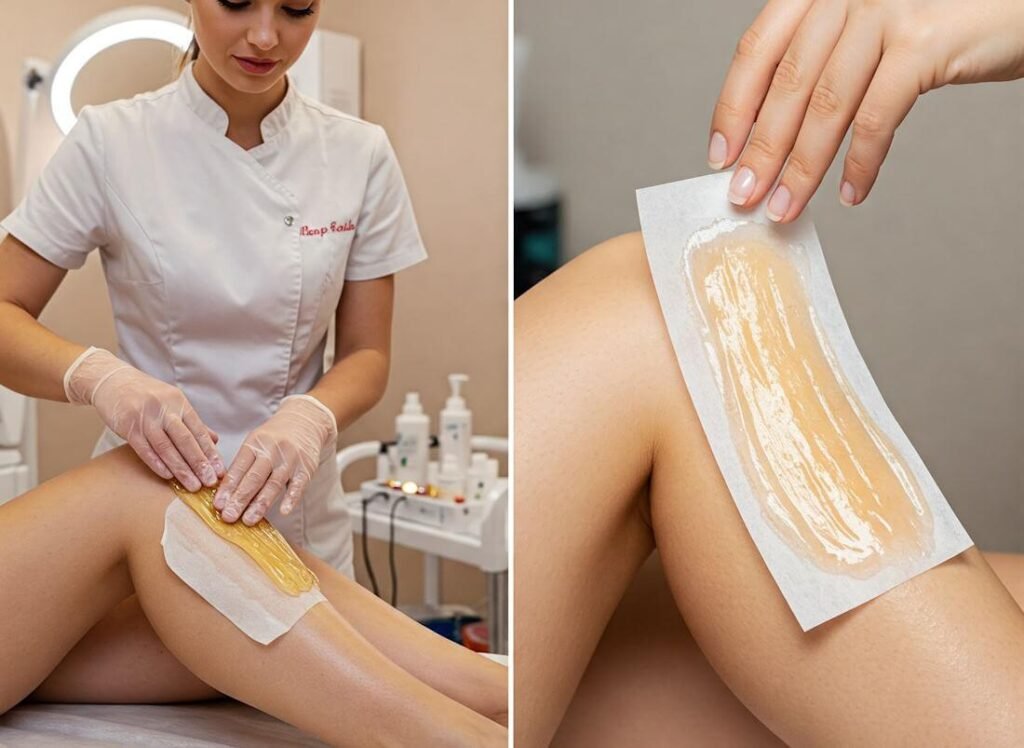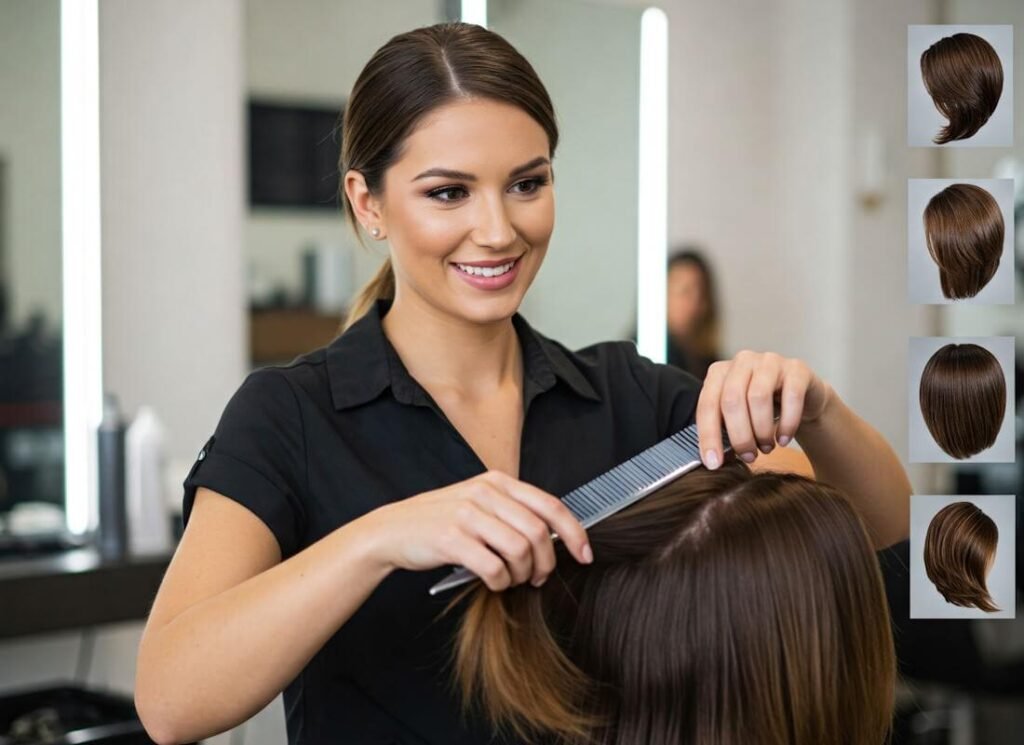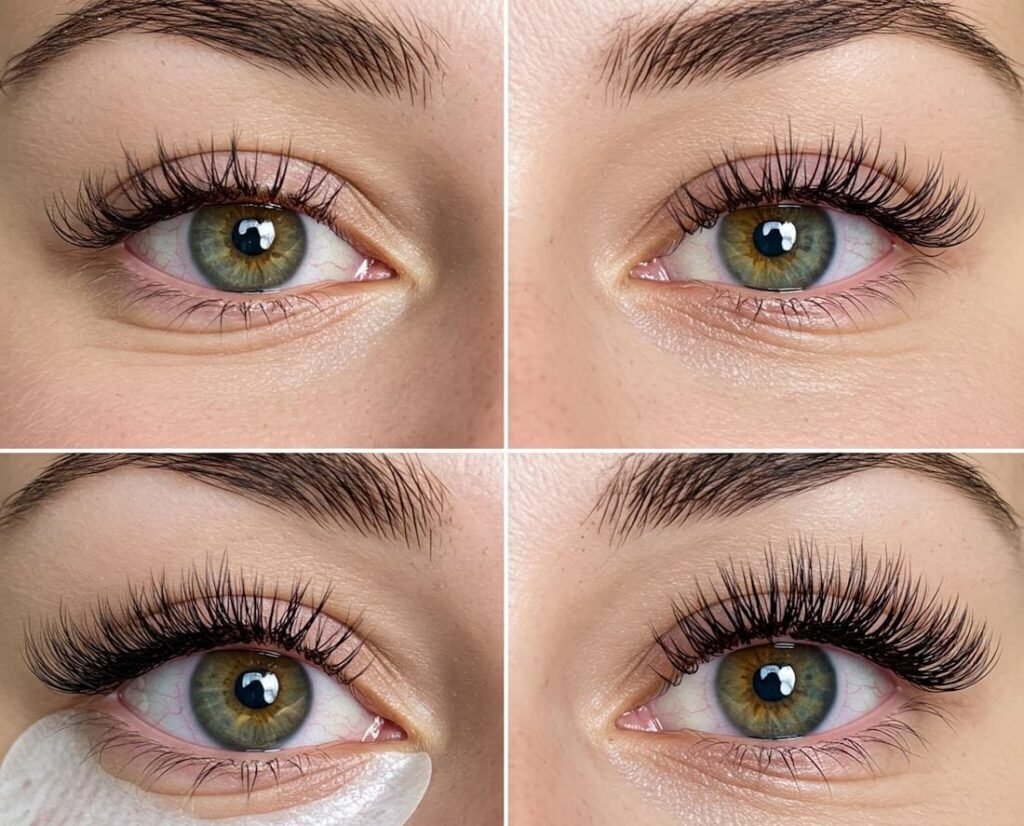Skincare is an essential part of personal grooming and health, yet many individuals still make frequent skincare mistakes that can severely impact their skin’s appearance and health. Recognizing these common pitfalls is crucial for achieving a glowing complexion and maintaining overall skin well-being. As the beauty industry evolves with new products and trends continuously being introduced, the potential for confusion grows, leading many to overlook basic skincare principles.
One prevalent mistake is the misuse of products; for instance, using overly harsh cleansers or not ensuring that products are suitable for one’s specific skin type can exacerbate existing issues rather than resolve them. Additionally, many fail to incorporate essential steps in their routines, such as applying sunscreen daily or moisturizing adequately, which can lead to long-term damage, including premature aging and skin disorders.
Another common error is neglecting the importance of patch testing new products. This crucial step can help prevent adverse reactions and ensure compatibility with individual skin types. Moreover, over-exfoliating or neglecting hydration often leads to a compromised skin barrier, making it more susceptible to irritants and environmental factors. Awareness of these mistakes can empower individuals to make informed decisions when crafting their skincare routines.
By identifying and addressing these common skincare mistakes, individuals can enhance the effectiveness of their routines and foster healthier skin. Implementing simple corrections can result in noticeable improvement, contributing to a more radiant appearance and bolstering confidence. As you navigate through this article, we will delve deeper into the specific mistakes and provide actionable solutions to foster a more effective skincare regimen.
Neglecting Sunscreen: The Importance of Daily Use
One of the most detrimental skincare mistakes individuals can make is neglecting the daily use of sunscreen. Sunscreen is a crucial element in protecting the skin from harmful ultraviolet (UV) radiation emitted by the sun, which can lead to various skin issues, including premature aging and even skin cancer. UV rays are divided into two primary categories: UVA and UVB. UVA rays penetrate deeply into the skin, accelerating aging processes and contributing to the formation of wrinkles and dark spots. On the other hand, UVB rays are responsible for sunburn and play a significant role in the development of skin cancer. Regular application of sunscreen helps to mitigate these harmful effects.
Incorporating sunscreen into your daily skincare routine is essential, regardless of the weather or the time of year. Research suggests that UV rays can still penetrate through cloud cover and glass, meaning even indoor exposure can be harmful. To ensure maximum protection, it is advisable to use a broad-spectrum sunscreen with an SPF of at least 30, as this provides adequate coverage against both UVA and UVB rays. For optimal effectiveness, sunscreen should be applied generously to all exposed skin, including the face, ears, and neck, approximately 15 to 30 minutes before heading outdoors.
It is also essential to consider the formulation of the sunscreen to fit one’s lifestyle. Lightweight, non-comedogenic options are available for those with oily or acne-prone skin, ensuring that the product won’t clog pores. Conversely, thicker formulations may benefit those with dry skin types. Regardless of the type, it is crucial to reapply sunscreen every two hours, and more frequently if swimming or sweating. By making sunscreen a non-negotiable part of your daily skincare routine, you can significantly enhance your skin’s health and resilience against harmful UV exposure.
Over-Exfoliating: Finding the Right Balance
Over-exfoliating is a prevalent skincare mistake that many individuals unknowingly commit, often in pursuit of a radiant complexion. When the skin is scrubbed too vigorously or too frequently, it can lead to adverse effects such as redness, irritation, and increased sensitivity. Identifying the signs of over-exfoliation is crucial; these may include persistent dryness, a feeling of tightness, and even the onset of breakouts despite your efforts to achieve clear skin.
The recommended frequency of exfoliation largely depends on skin type and the specific exfoliation method employed. For instance, individuals with sensitive or dry skin should consider exfoliating once a week, while those with oily skin may benefit from exfoliation two to three times per week. It’s essential to pay attention to how your skin reacts and adjust your routine accordingly. Listening to your skin can help you avoid exacerbating existing concerns.
While physical exfoliants, such as scrubs, may be appealing, they can sometimes cause micro-tears in the skin, leading to further irritation. Instead, consider incorporating chemical exfoliants, such as alpha hydroxy acids (AHAs) or beta hydroxy acids (BHAs), which can offer gentler yet effective results. These acids work by dissolving dead skin cells and promoting cellular turnover without harsh scrubbing. Hydrating formulations containing hyaluronic acid or glycerin can also help replenish moisture lost during the exfoliation process, supporting healthy skin renewal.
Ultimately, the key to successful exfoliation lies in striking a balance; understanding your skin’s needs and making informed choices about products and frequency will ensure that you achieve the desired glow without the detrimental effects of over-exfoliating. Developing a thoughtful skincare routine that incorporates gentle practices can lead to lasting improvements in skin health and appearance.
Ignoring Skin Type: Customizing Your Routine
One of the most prevalent skincare mistakes individuals make is neglecting their unique skin type when selecting products. Each person’s skin can typically be categorized into one of four main types: oily, dry, combination, and sensitive. Understanding these distinctions is vital in curating a personalized skincare regimen that effectively addresses specific concerns.
Oily skin often produces excess sebum, which can lead to clogged pores and a shiny appearance. For this skin type, lightweight, non-comedogenic products are recommended. Ingredients like salicylic acid and hyaluronic acid can be beneficial, as they help regulate oil production while providing hydration without heaviness.
On the other hand, dry skin lacks moisture and can feel tight or flaky. To remedy this, individuals should seek hydrating formulations packed with ingredients such as glycerin, ceramides, and fatty acids. A rich moisturizer is essential to restore the skin’s barrier and prevent moisture loss.
Combination skin displays characteristics of both oily and dry skin, often needing a careful balance between the two. It is advisable to use products tailored to the different areas of the face, such as lighter gels for oily zones and richer creams for drier areas. A gentle exfoliating product can also aid in harmonizing the overall texture of combination skin.
Sensitive skin requires utmost care and gentleness, as it can react negatively to harsh ingredients. Fragrance-free and hypoallergenic products should be prioritized to avoid irritation. Look for soothing ingredients like aloe vera, chamomile, or green tea extract that calm and nourish the skin.
Incorporating the right products that align with one’s specific skin type is paramount for achieving optimal results. This approach not only enhances the effectiveness of skincare treatments but also promotes overall skin health.
Skipping Moisturizer: Hydration Is Key
One of the most prevalent misconceptions in skincare is the belief that individuals with oily skin do not require a moisturizer. This notion can lead to various problems, including an imbalance in the skin’s oil production and increased issues such as acne and dryness. In reality, hydration plays a pivotal role in maintaining healthy skin across all types, including oily skin. By not moisturizing, individuals may inadvertently exacerbate their skin concerns instead of alleviating them.
Moisturizers are designed to help maintain the skin’s moisture barrier, which is crucial for overall skin health. Regardless of skin type, every individual should aim to incorporate a hydrating product into their regimen. For those with oily skin, it is essential to select the appropriate formulation that does not contribute to excess oil production. Lightweight, non-comedogenic moisturizers that are water-based or gel-based can provide adequate hydration without causing clogging of the pores.
Beyond simply choosing the right type of moisturizer, it is also essential to pay attention to the ingredients included in these products. Components like hyaluronic acid can offer intense hydration while remaining light on the skin. Additionally, look for formulas that contain glycerin or aloe vera, both known for their hydrating properties. This careful selection is what enables individuals with oily skin to experience the benefits of moisturization without the burden of an overly greasy texture.
In conclusion, understanding the necessity of hydration is vital for every skin type, including those with oily skin. Implementing a suitable moisturizer can greatly enhance skin health and appearance, allowing individuals to achieve a balanced and radiant complexion. By re-evaluating their skincare routine and integrating a well-chosen moisturizer, individuals can effectively address their specific skin needs. Making hydration a priority is a significant step towards achieving optimal skin health.
Not Adjusting Your Routine Seasonally
One prevalent skincare mistake that many individuals make is adhering to a year-round routine without making necessary adjustments for seasonal changes. As we transition through different seasons, our skin’s needs can dramatically change due to variations in temperature, humidity, and environmental conditions. Understanding the impacts of these seasonal shifts is essential for maintaining healthy skin.
During the winter months, for instance, cold air and indoor heating can lead to skin dryness and an increase in conditions such as eczema. Consequently, individuals may benefit from incorporating richer, more hydrating moisturizers, as well as adding humectants like hyaluronic acid to help draw moisture into the skin. To combat dryness, one might also consider switching to a cream-based cleanser that does not strip away natural oils, thereby preserving skin hydration.
In contrast, hotter months often bring about increased humidity, which can lead to oiliness and breakouts. During this season, transitioning to lighter, oil-free moisturizers may be more appropriate, along with gel-based formulas that provide hydration without clogging pores. Additionally, ensuring a good sunscreen routine becomes imperative as prolonged sun exposure can exacerbate skin issues and accelerate the aging process.
Understanding the importance of adapting your skincare routine seasonally is paramount to achieving optimal skin health. Regularly assessing your skin’s response to seasonal changes can help you identify patterns and adjust your regimen accordingly. By taking into account the humidity levels and temperature fluctuations, individuals can create a dynamic skincare routine that addresses their skin’s evolving needs, ultimately enhancing its overall appearance and health. An adaptable approach ensures that your skincare remains effective throughout the year, preventing common issues that arise from neglecting these seasonal transitions.
Using Too Many Active Ingredients: The Overload Effect
In the realm of skincare, the term “less is more” holds significant value, especially when it comes to the use of active ingredients. Many individuals, in their quest for flawless skin, fall into the trap of combining too many potent active ingredients. While it may seem that layering multiple products would enhance efficacy, this approach can often lead to adverse reactions, including irritation, redness, and dryness. Each active ingredient serves a specific purpose, and overwhelming the skin with an overload can counteract the intended benefits.
Active ingredients such as retinol, vitamin C, niacinamide, and various acids play crucial roles in addressing different skin concerns; however, they should not be used simultaneously in excess. For instance, using both glycolic acid and salicylic acid in a single routine might seem advantageous for acne-prone skin, but the potential for irritation increases significantly. Instead, it is advisable to periodically alternate between different active ingredients, allowing the skin to acclimate without distress. This staggered approach promotes healthier, more vibrant skin while minimizing the risk of adverse effects.
Furthermore, it is essential to prioritize the needs of your skin and recognize that not every active ingredient is suitable for every skin type. Conducting a patch test when introducing new products and consulting with a skincare professional can assist in customizing a regimen that is both effective and gentle. Establishing a skincare routine with a few key, high-quality active ingredients can lead to more noticeable results and a happier complexion. By simplifying one’s routine and focusing on core essentials, individuals can enhance their skincare effectiveness while allowing their skin the opportunity to thrive.
Neglecting the Neck and Décolletage: A Skincare Oversight
It is a common oversight in skincare routines to focus solely on the face, often leaving the neck and décolletage underappreciated. The skin in these areas is similarly delicate and susceptible to the effects of time, sun exposure, and environmental factors. As individuals prioritize facial skincare, they frequently forget that neglecting the neck and décolletage can lead to premature signs of aging, such as sagging skin, fine lines, and uneven pigmentation. These regions are directly linked to overall skin health and appearance, making it vital to include them in any comprehensive skincare regimen.
The skin of the neck and décolletage is thinner and can show signs of aging more quickly than other areas. Moreover, the lack of oil glands in this skin can contribute to dryness. To avoid the visible consequences of neglecting these areas, it is crucial to adopt a skincare protocol that incorporates both the neck and décolletage. When applying serums or moisturizers, it is advisable to extend the routine from the face down to the neck and décolletage, using gentle upward motions.
Additionally, incorporating products that offer sun protection is essential. The neck and décolletage are often exposed to harmful UV rays, which can lead to sun damage. Sunscreen should be considered a staple in skincare products used in these areas. Regular exfoliation is also beneficial, as it helps maintain smooth, radiant skin by removing dead skin cells that accumulate over time. Gentle exfoliators can be applied to the neck and décolletage once or twice weekly to promote a healthy complexion.
By implementing these strategies, individuals can ensure that their neck and décolletage receive the same attention and care as their face, promoting a more youthful and cohesive appearance. It is essential to recognize the importance of these often-overlooked regions in achieving overall skin health and aesthetic goals.
Improper Application Techniques: The Right Way to Apply Skincare
Effective skincare goes beyond merely selecting the right products; it equally hinges on how these products are applied. Improper application techniques can impede the efficacy of even the most high-quality skincare products, leading to suboptimal results. One common mistake individuals make is applying products in the wrong order, which can disrupt their intended effects. A fundamental rule is to use a layering technique, starting from the lightest to the heaviest products. For example, begin with a gentle cleanser, followed by toners or essences, and conclude with thicker creams or oils.
Another frequent issue arises from the manner in which products are applied. Rubbing the skin too vigorously can lead to irritation, inflammation, and, ultimately, a compromised barrier function. It is advisable to adopt a gentler approach. When applying serums or moisturizers, use upward and outward strokes, allowing the skin to absorb the product more effectively while fostering a youthful appearance. For eye creams, use your ring finger, which exerts the least pressure, to avoid unnecessary strain on the delicate skin around the eyes.
Moreover, the quantity of product used plays a pivotal role. Many people tend to either underuse or overuse their skincare products, which can diminish the desired outcomes. A pea-sized amount is typically sufficient for serums, while moisturizers may require a slightly larger dollop. For SPFs, ensuring an adequate quantity is crucial for protective efficacy, often cited as two fingers’ worth for the face.
In summary, mastering proper application techniques for skincare is essential for maximizing benefits and achieving desired results. By adhering to the right order of product application, employing gentle techniques, and using appropriate quantities, individuals can enhance their skincare regimen significantly. This attention to application detail can transform a basic routine into a highly effective daily ritual.
Conclusion: Building a Successful Skincare Routine
In reviewing the top common skincare mistakes, it becomes clear that rectifying these oversights is essential for anyone seeking healthy and radiant skin. Throughout this blog post, we have identified a range of pitfalls that often hinder the skincare journey. These include neglecting to cleanse properly, overlooking the importance of sunscreen, and failing to adjust one’s routine to meet changing skin needs. By acknowledging these missteps, readers can take proactive measures towards enhancing their daily practices.
Each individual’s skin is unique, which makes it vital to recognize that a one-size-fits-all approach to skincare can be counterproductive. Instead, a customized skincare routine—one that aligns with personal skin types, concerns, and environmental factors—will yield the best results. The significance of consistency in applying products cannot be stressed enough; it is the foundation for achieving the desired outcomes. Skincare is not merely a series of actions, but rather a holistic approach that encompasses understanding ingredients, selecting the right products, and listening to one’s skin.
Moreover, diligence in routine evaluation can further aid in ensuring that the chosen methods remain effective over time. It is important to periodically reassess the products one uses and their effects, making adjustments as necessary to accommodate skin changes resulting from age, stress, or climate variations. By staying mindful and informed about skincare practices, individuals can evolve their regimen, thereby eliminating previous mistakes and fostering a healthier complexion.
Ultimately, building a successful skincare routine is an ongoing journey that demands both patience and knowledge. With careful consideration of the discussed common mistakes and the adoption of tailored strategies, achieving flawless skin is not just a possibility but an attainable goal. Embrace this challenge and take the necessary steps towards sustaining a vibrant and healthy appearance.





